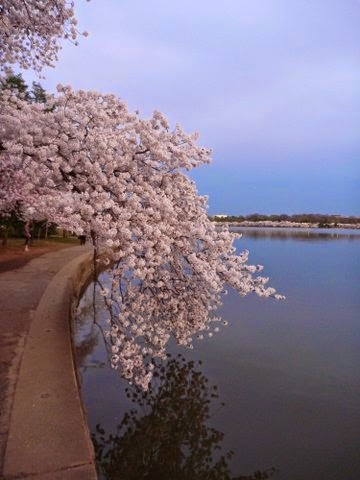 |
| Dawn at the Tidal Basin, April 2014 (photo by Julia Blakely) |
 |
| Front cover of the Catalogue of Japanese lilybulbs, iris and other flower roots ... |
So it is interesting to find fruit, ornamental, dwarf trees
and shrubs in the stock listed in the catalog (QK369 .B67c 1899 SCNHRB), as stated on the title page, of
“L. Boehmer & Co., nurserymen & exporters of Japanese bulbs, seeds,
plants, &c. … Yokohama, Japan … the only European nursery firm in Japan,
established 1882.” Appealing to a well-to-do, sophisticated clientele, there are delicate
hand-colored wood-block illustrations, bound-in illustrated printed wrappers,
with silk ties. Although the text is all in English, the leaves are
double-folded, Japanese style and printed by T. Hasegawa, publisher & art
printer, Tokyo, Japan. An imaginative artist wittily combined images with the
printed words.
This example, along with other nursery catalogs in the
Smithsonian Libraries, can also reveal hints at the propagation history of
specific plants, seed cleaning, packing and shipping methods, and prices, as
well as changing styles in landscape design. Or, rather than research, the catalogs can provide inspiration—one can dream of a time of
planting something new and exotic and while wandering around the gardens, enjoying
cool weather.
Soon The Ephemera Society of America will hold its board meeting in Washington D.C. (September 13, 2014). Events surrounding the gathering will include
visits to several collections of the Smithsonian Libraries, to view such items as trade literature, including perhaps this truly rare nursery catalog, only one other copy of the 1899 imprint is known to exist.











No comments:
Post a Comment